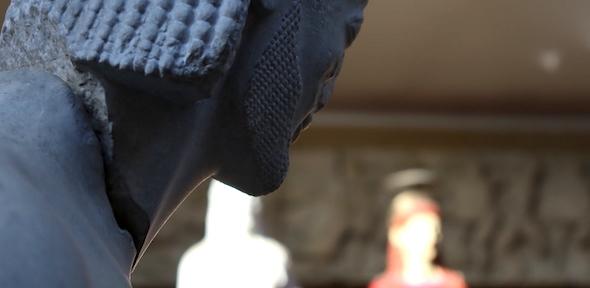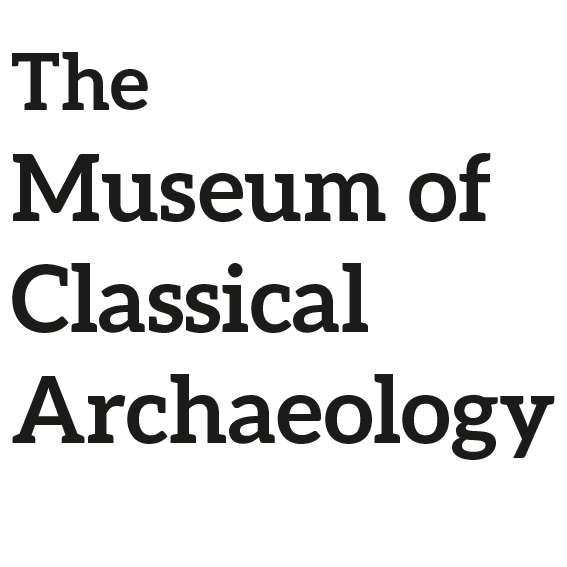
Where are the toilets?
The toilets are downstairs in the main foyer. Exit the Museum through the main door by the front desk, go downstairs and go back on yourself to find the ladies on your left and the gents on your right.
There is a small disabled toilet here too, but there is a more spacious one in Entrance 3 to the Classics Faculty Building - unfortunately, you do need to exit the building and reenter through a different door.
Find out more
Why are you so hard to find?
We hear you and we're working on it. We are a small Faculty-based museum and we don't have an entrance on the road. We are working on improving signage.
Where are all the real things?
Our objects are really there, we promise. However, we're sure you understand we try to discourage touching so you can't really feel them beneath your finger tips.
However, we understand your question. The sculptures in our gallery are all plaster casts (bar the odd ceramic or resin one). This means they are replicas of sculptures which are somewhere else in the world. It's a strange idea, isn't it, to have a museum full of copies? We've even been told we're a museum of lies! But there are long traditions of collecting copies of classical and later sculpture.
Find out more
They're just copies so I can touch, right?
No. Please don't. Plaster casts are much more vulnerable than their originals: plaster is a much softer material than marble, stone or bronze. The biggest risk to our objects are unintended knocks and bumps, including pressure placed on old breaks or bashes caused by bags. Plaster is also very porous, so it absorbs the dirt and oils on your hands.
For all these reasons, you will notice signs reminding you not to touch. You might also notice that we ask you to remove rucksacks from your back on entry, so that you cannot accidentally bump a statue.
Why are so many of the statues naked?
This is a really good question. Nudity is an enduring feature of ancient Greek art, and it is one which the Romans later also co-opted. Moreover, it is one which Greek sculptors self-consciously adopted when they first began experimenting with sculpting the male body in monumental form in the late seventh century BCE. Female nudity was less visible until toward the end of the fourth century BCE.
But just because so many of our statues are naked doesn't mean that men regularly walked down the road naked in the ancient world; people were usually clothed in public, as a rule. However, there were particular contexts where viewers could expect to encounter men in their birthday suits - at athletic competitions such as the Olympics and in the gymnasium, where young men trained both their bodies and their minds.
It is clear that nudity in both sculpture and life had a whole range of meanings and it is sometimes said that ancient statues wear their nakedness like a costume because, just like clothes, nudity says a good deal about the person represented. For instance, nudity is shorthand for physical prowess and strength, but it also puts on display youthful male beauty and even desirability - probably also wrapped in some degree of elitism or at least aspirational, since it was those who were rich who could afford to invest in their bodies in the gym or even to erect such expensive monuments. Somewhat counterintuitively, the sheer perfection of the naked male body can imply invulnerability on the battlefield and in the face of death.
Nudity, then, is not one size fits all in classical art. There is more to it than meets the eye.
Do you ever cover up the statues?
We know that some visitors will be less comfortable with the nudity on display in our gallery than others. However, we are unable to offer to cover up or hide any of the statues, not least because it would be logistically impossible. If you are bringing a group and have concerns about the impact of the naked statues on your members, we recommend you contact our Education and Outreach Coordinator, Justyna Ladosz.
You may sometimes see a statue covered with a blanket or tyvek in our gallery, especially when drilling or other maintenance work is happening nearby. Please be assured that this is a matter of collections care which we undertake to protect our museum objects from harm.
For the avoidance of doubt, we have not ever covered our statues for moral or religious reasons.
Do you have a guidebook?
We don't at present, but we're working on this, too. Our old guidebook is now out of print. We do, however, have an introductory leaflet to the gallery and very friendly staff on our front desk who are happy to answer all of your questions - even the silly ones.







